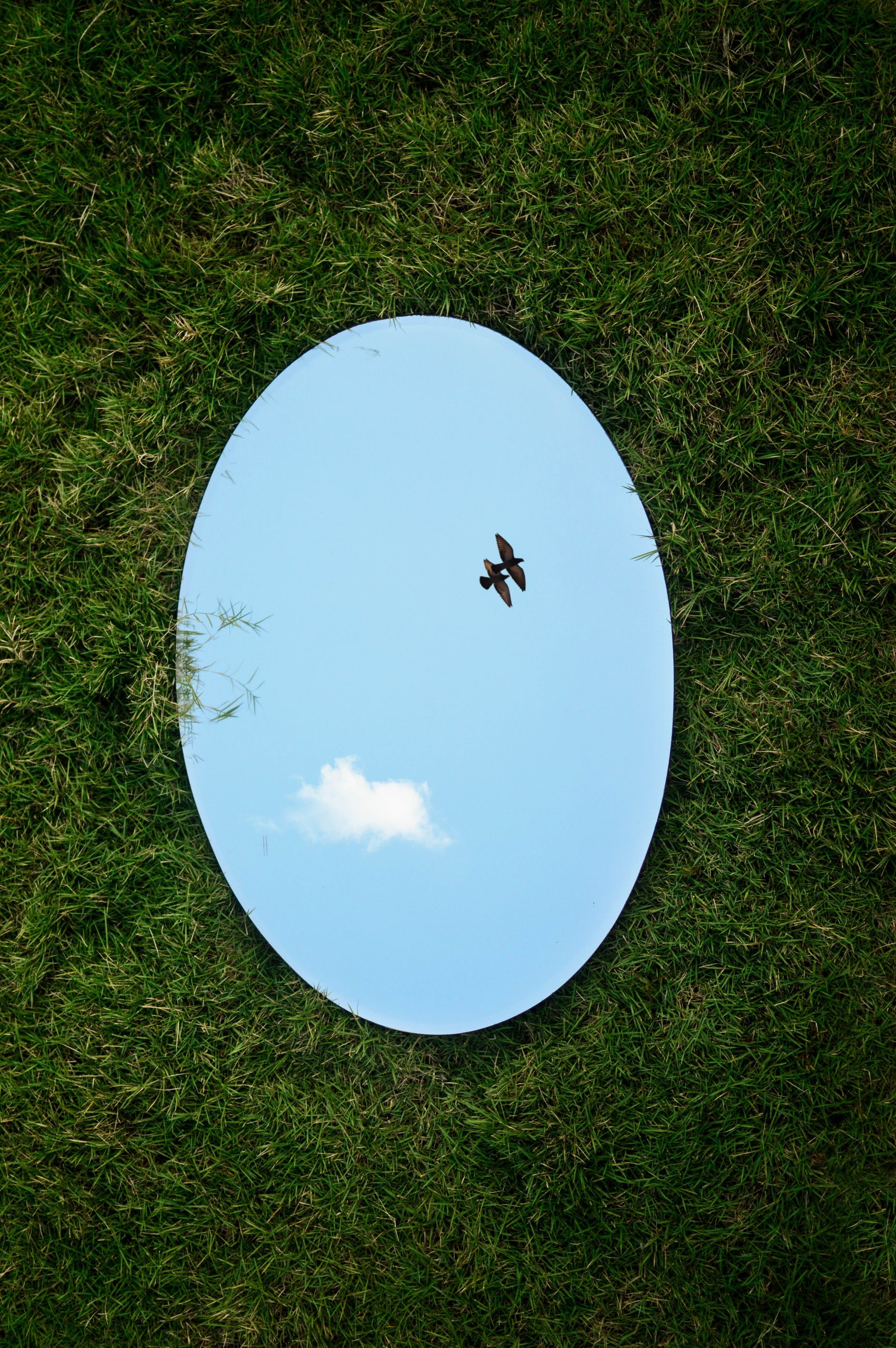I have to catch my imagination by surprise. All my planning and plotting and sweating blood is best directed toward tricking myself into revealing what I didn’t know that I know.
I do this with a variety of writing forms and structures and prompts, often drawn from children’s puzzles, various literary traditions, perceptual magic tricks, chance operations…
Sometimes I try to construct a kind of writer’s periscope, with lenses and mirrors that refract and redirect my attention from my mind’s habitual preoccupations, in order to see what’s hidden. Or maybe peer into an imaginary scrying mirror: I’m a fortune-teller looking for a reflection of what doesn’t yet exist.
I’ve been playing with different kinds of acrostics for years. Sometimes I use the simplest of abecedarian acrostics, so-called because it uses the alphabet as its vertical axis:
All
Bide
Carefully…
Day’s
Evening
Faintly
Glows,
Hangs
In
Jail,
Knowing
Love
May
Not
Open
People.
Quiet
Rips,
Snakelike,
Through
Useless
Violent
Wasteland.
Xenophobes?
Yearning
Zombies.
(I just now wrote the acrostic above, wanting to show an example here. I was going to trail off after the first few words, leaving an “etc.” But I couldn’t resist finishing it, even though the last three difficult letters of the alphabet rarely satisfy, due to the more limited number of word options. Such is the siren call of the acrostic.)
In this one-word-per-letter acrostic, much of the delight comes from the forced juxtaposition of one word to the next, noticing specific phrases that jump off the page with energy or float mysteriously in shadow or become one-liners. I might never have written a sentence that begins, “Quiet rips, snakelike,…” but the acrostic above gave me that image out of my own brain.
Acrostics also teach us the power of punctuation:
“In jail, knowing love may not open people.”
Switch around a couple of commas and periods and you get:
“Knowing love may not open, people quiet.”
Two very different images and ideas. And the surprising grammar refreshes how we hear it.
For many years, I’ve been incorporating meditation practices into my writing workshops and classes, more recently co-guiding workshops and retreats with my meditation mentor Marcy Vaughn. I don’t necessarily trust the kind of writing prompts that encourage the rehashing of your own personal narrative. But just as meditation disrupts habitual thinking, a good writing prompt can both unearth and disrupt our habitual internal narratives and programmed cultural narratives.
Some of the earliest acrostics were in praise of a loved one, with a name as the vertical axis. And when you write an acrostic using your own name as the vertical text, there’s only so far you can force it to tell your same old story. And the story it ends up telling is often surprisingly revealing.
By capturing the surprising imagery and phrasing from an acrostic and exploring it in your writing, you might find yourself veering off familiar paths into brand new territory or a long-forgotten land you thought had disappeared.
In my own writing and in teaching, I have played with the whole family of acrostics (mesostics, diastics, telestichs, the golden shovel and other such intricate forms). I’m looking for the truth, but the truth sometimes hides behind convention or habit. These oblique mirrors can help mine, restructure, and transform what comes up – whether from your meditation practice, or a conversation at the next table, or my nightmares, or the news.
With gratitude to John Cage, Jackson Mac Low, Terrance Hayes, Melanie Henderson, and Erik Ehn.
———
Marcy Vaughn and I are always developing and structuring new prompts and meditations for our programs, as in these, upcoming: two separate full-day Freeing the Spell of Story writing and meditation retreats, offered online on Oct 15, 2023 and January 13, 2024.
For more info and to register, click HERE

